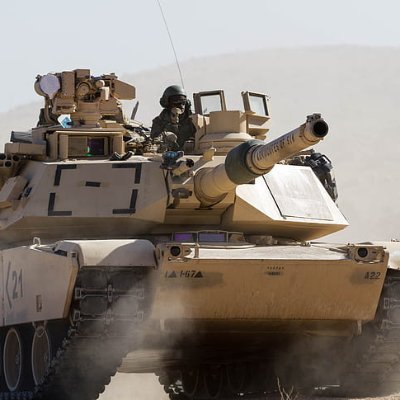
The Bazaar of War
@bazaarofwar
Followers
24K
Following
8K
Media
2K
Statuses
6K
Warfare, past and present. Read 'Saladin the Strategist': https://t.co/KT9cGzHRIj More writing: https://t.co/47yApgaler
Joined October 2020
The paperback version of 'Saladin the Strategist' is out! https://t.co/viJKMxV8S5 I've published part of the epilogue, on the question of strategy in the Middle Ages: https://t.co/TykGqDVsAT
bazaarofwar.com
The following is the epilogue to 'Saladin the Strategist', which can be purchased here. The introduction is available here. In 1214 John of England, Richard the Lionheart’s brother and successor,...
1
11
93
Firing the big guns (16") at Fort Michie.
This had the effect of extending NYC’s defensive perimeter around the entire Long Island Sound. Batteries on islands and nearby shores could range the entire entrance, practically turning the Sound into a gigantic roadstead, while also making it hard for subs to enter.
1
0
25
@bazaarofwar Fourteen U-boats were sunk within 400 n.m. of US soil. In addition to U-869 off NJ there’s U-550 closer to NYC and U-521 off Delmarva. New England has U-853 off RI and U-215 off Boston. North Carolina has three, one of which I’ve dived twice. Commissioned this map for my book:
0
3
16
FORTRESS MANHATTAN It’s easy to overlook New York City’s military geography since it hasn’t faced a live threat in over 200 years. But it is perhaps the finest natural naval bastion in the world, one of the major reasons for its place as America’s economic capital. 🧵
8
25
175
But defensibility does determine where major ports are sited, and its a testament to New York's superb geography that it hasn't faced a real threat in nearly 250 years.
1
1
44
Defensibility is far from the biggest factor favoring New York's prominence—the commercial value of its harbors and outlets to the ocean were far greater, plus it had much better access to the interior than other ports (especially after the Erie Canal was completed in 1825).
1
0
32
The missile age renders all these considerations even more complex, just one of many reasons it's hard to seriously entertain any military threat to New York in the 21st century.
3
0
26
Failing that, something more complex would be needed: amphibious landings to knock out shore defenses, allowing ships to move into the Sound or Lower Bay, which can then provide naval support—like what the Germans did against the Russians in Operation Albion.
1
0
26
That still requires a blockade of the Lower Harbor or Long Island Sound, and then it’s at least 50 mi through New Jersey over very marshy terrain or 120 mi across Connecticut. Or by Long Island, but at ~15-mi wide it’s very defensible and vulnerable to naval fire from the Sound.
1
0
30
But even supposing America faced a much more capable naval adversary in the 20th century, their options to attack Manhattan wouldn’t be good. The easiest would be to land up or down the coast and attack by land.
1
0
33
This was evident in both World Wars. Although German submarines sank staggering quantities of Allied shipping off the coast during the 1940s, they avoided Long Island Sound and the Lower Bay altogether—the closest they got was the waters off Newport.
1
1
39
This had the effect of extending NYC’s defensive perimeter around the entire Long Island Sound. Batteries on islands and nearby shores could range the entire entrance, practically turning the Sound into a gigantic roadstead, while also making it hard for subs to enter.
1
1
41
The US began catching up with Britain—the strongest naval power—over the rest of the 19th century: coastal defenses got better as rifled artillery extended in range, accuracy, and power, while the US Navy grew in size.
1
0
35
Although the British blockaded both entrances to New York City, they never entered the Lower Bay or passed Sands Point, while shore batteries and shallow-draft gunboats harassed British squadrons that had ventured far into Long Island Sound.
1
0
33
The situation had changed by the time of the War of 1812. New York was defended by many more soldiers than Washington had, and several forts had been constructed around New York City (incl. Fort Wood, where the Statue of Liberty now stands).
1
0
35
New York remained a British stronghold for the rest of the war. Although Washington and Rochambeau contemplated an attack in 1781, the defenses were too strong; instead, they marched all the way to Virginia to win a more attainable victory with naval support at Yorktown.
1
0
35
The French then sailed off to aid the American siege of Newport, just past the entrance to the Long Island Sound. The British used their interior lines and send 2,000 troops via the Sound to reinforce the garrison, and the siege ultimately failed.
1
0
35
The French pursued, but hesitated around Sandy Hook. The local pilot advised caution, and the ensuing delay for soundings gave the British time to set up a battery and form their ships up around the entrance—even with a much superior force, this was too great a risk.
1
0
32
The British were able to make good use of the city, however. When a strong French squadron arrived on the Delaware in 1778 to aid the Revolution, the smaller British squadron fled to the protection of New York harbor.
1
0
36
These preparations delayed the British for two months, but they easily beat the Washington when they attacked on 27 August. After besieging his Brooklyn camp another 3 weeks, they marched around Washington’s flank and crossed to Manhattan, forcing him to beat a hasty retreat.
1
0
36
The British handily took Staten Island, and Washington’s batteries on the Brooklyn side of the Narrows were too weak to stop them from sailing through. Only the newly-built fortresses guarding Manhattan deterred a direct attack—they instead attacked overland via Long Island.
1
0
34


